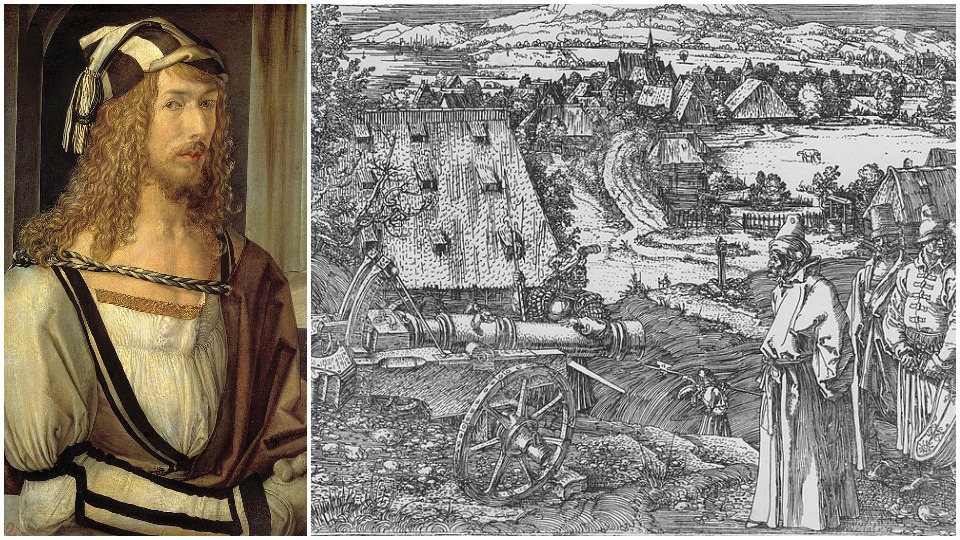
Albrecht Dürer was born 550 years ago, on May 21, 1471, during the Renaissance, a time of upheaval, that rang in the early modern age. With improved production methods, industry and trade grew rapidly, bringing with it more money and the strengthening of a new middle class. Modern science developed, inherited truths were called into doubt, and the working people began to challenge their appointed places in the social, political, and religious hierarchies. It was a time, among other things when the peasants arose and demanded to be treated as equals.
The Reformation in Germany was an expression of these social changes in the early 16th century. The rising bourgeoisie in the countries north of the Alps, especially Germany, felt the need to break with the papacy. The opposition forces did not yet possess the economic and political power that would have enabled them to subjugate the papacy to their own interests, as in Italy. The Reformation movement began with John Wycliffe in England, continued with Jan Hus in Bohemia, and culminated in Germany. Popular social opposition became part of it. Social forces in religious guise fought the Hussite wars in Bohemia.
In Germany, a differentiation within the forces that had initiated the Reformation soon became apparent. When the upper-middle-class patricians came to understand that the Reformation meant a complete break from Rome and that there were elements within this movement that aspired beyond bourgeois class society, they returned to the bosom of the papacy.
As Engels describes in The Peasant War in Germany, Luther became afraid when he grasped the socially explosive effect his challenge to Rome’s hierarchy had on the peasants, who understood this to legitimate aspirations to change their own lot. However, Luther’s theological reform did not question class antagonisms.
Thomas Müntzer became the leader of the popular opposition. He led the Peasant War, which challenged the old social order, while Luther, along with the bourgeoisie, turned against the revolutionary peasants, preventing the unification of all oppositional forces, thereby setting back major social change by centuries. The peasants and their urban plebeian allies were defeated; Müntzer was imprisoned and beheaded.
The influence of the working classes on German art of the Reformation period is frequently underestimated. It survives in numerous pamphlet woodcuts from the early 16th century, but above all in many prints by Dürer and his circle. Dürer’s influence can be seen in the work of Grünewald, Riemenschneider, Jörg Ratgeb, and many other artists, and infuses German art of the Reformation period with a haunting popular appeal.
Albrecht Dürer’s genius so dominated the art of the early bourgeois revolution in Germany that it has been called the Dürer epoch. He was born in Nuremberg as the son of a goldsmith, studied for three years in the workshop of Michael Wolgemut, spent four journeyman years in Basel and Strasbourg, among other places, and finally settled in Nuremberg. Twice he crossed the Alps to Italy, first in 1495, the second time in 1505-06, each time spending an extended period in Venice. A third journey took him to see the Netherlands in 1520-21, where he made many important acquaintances.
This remarkable portrait, created during the journey to the Netherlands, is based on an actual encounter and was not the result of Dürer’s imagination. The drawing shows the artist’s great interest in people who came to Europe because of growing international trade, which of course included the slave trade. The woman depicted here is Catherine, a 20-year-old servant of the Portuguese commercial agent João Brandão, who administered the Portuguese spice monopoly in Antwerp. Dürer was his guest when he traveled to Antwerp in 1521. It is likely that Brandão acquired this African woman through his trade connections. Her name suggests that she had converted to Christianity.
Dürer’s obvious interest here is in the individual person. His deep humanism infuses her portrait with the same dignity he affords the peasant he depicts. Dürer was the first German artist to capture the peasants’ self-confidence that had been stirring since the late 15th century. He was the first to portray peasants as esthetic subjects. Through Dürer, depictions of peasants appear in the revolutionary pamphlets of the time.












Comments